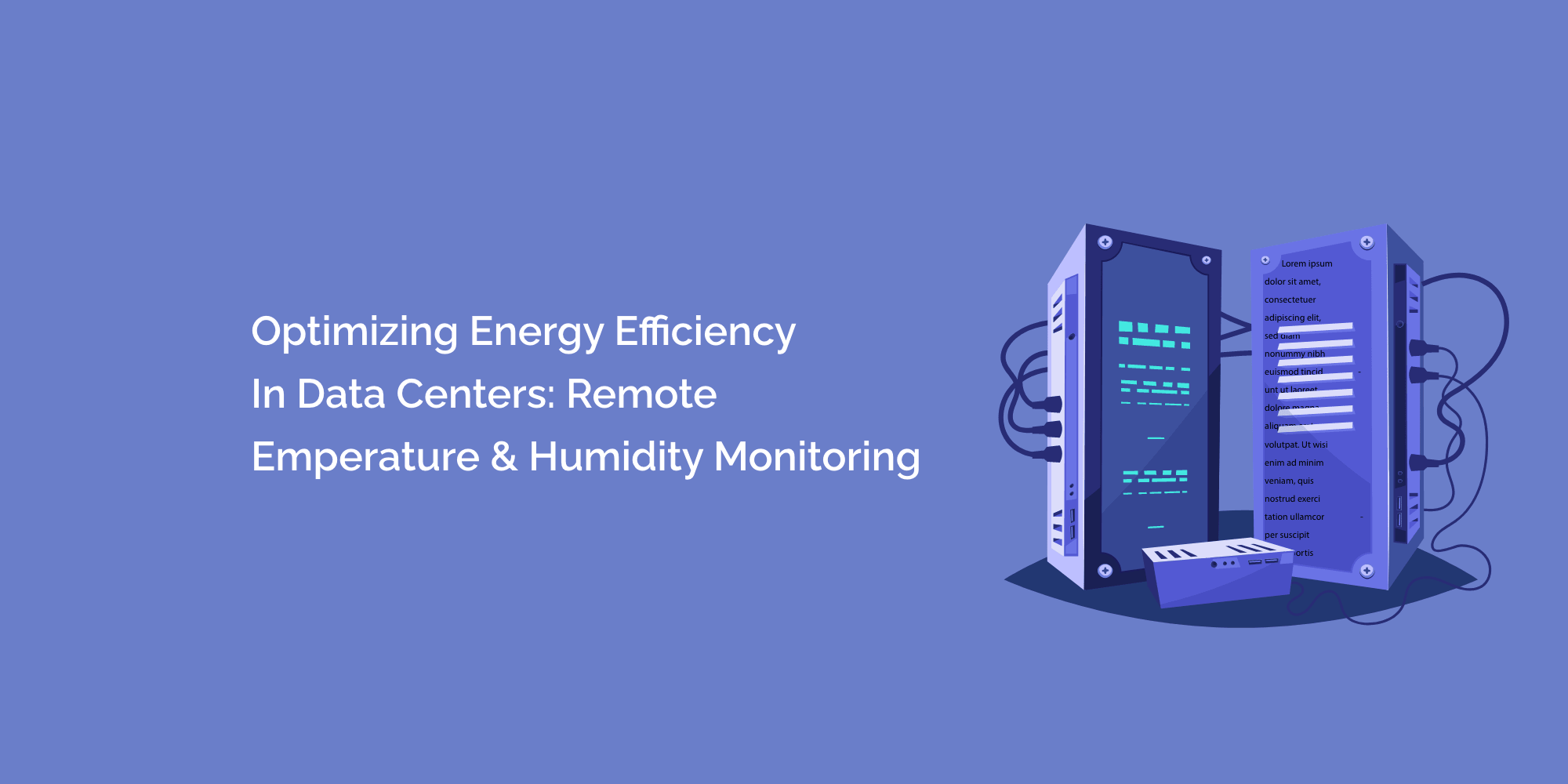Data centers are critical infrastructures that house servers, network equipment, and storage systems that support the operations of modern businesses. Maintaining proper temperature and humidity levels is essential to ensure optimal performance and reliability of these systems. This blog will explore the significance of remote temperature and humidity monitoring in enhancing data center performance. We will discuss the benefits, implementation considerations, and best practices for leveraging remote monitoring systems.
The Importance of Temperature and Humidity in Data Center Performance
Temperature and humidity play a crucial role in data center performance. Unacceptable environmental conditions can lead to equipment failures, reduced lifespan of components, and increased energy consumption. We will highlight the impact of temperature and humidity on equipment efficiency, cooling requirements, and data integrity.
Understanding Remote Temperature and Humidity Monitoring
Remote temperature and humidity monitoring involve strategically placing sensors throughout the data center to collect real-time data. This data is transmitted wirelessly or through a network connection to a centralized monitoring platform. We will explore how remote monitoring systems provide data center operators with continuous visibility into environmental conditions, enabling proactive management.
Benefits of Remote Temperature and Humidity Monitoring
- Real-Time Insights: Remote monitoring systems offer real-time visibility into temperature and humidity levels, enabling operators to detect fluctuations and take immediate action to maintain optimal conditions.
- Proactive Alerts: Operators receive instant notifications when predefined thresholds are exceeded, allowing them to address potential issues before they impact performance or result in equipment failures.
- Energy Efficiency: Remote monitoring helps optimize cooling systems by providing data that allows for precise cooling adjustments, reducing energy consumption and costs.
- Equipment Reliability: By ensuring proper environmental conditions, remote monitoring systems increase equipment reliability and lifespan, reducing the risk of unexpected downtime.
- Predictive Maintenance: Continuous monitoring enables the detection of trends and patterns that can help identify potential equipment malfunctions, allowing for proactive maintenance and minimizing the risk of system failures.
Implementing Remote Monitoring Systems
Successful implementation of remote monitoring systems requires careful planning and consideration. We will discuss critical factors such as sensor selection, placement, connectivity options, and integration with existing data center infrastructure. Additionally, we will cover the importance of scalability and flexibility in remote monitoring solutions to accommodate future growth and changing data center needs.
Best Practices for Remote Temperature and Humidity Monitoring
- Sensor Placement: Proper placement of sensors is crucial to obtain accurate readings. We will explore recommended sensor placement locations, including intake and exhaust vents, hotspots, and critical equipment areas.
- Threshold Configuration: Setting appropriate temperature and humidity thresholds is essential to detect deviations that may impact performance. We will discuss best practices for defining points based on equipment requirements and industry standards.
- Regular Maintenance and Calibration: Regular maintenance and calibration of sensors are essential to ensure accurate readings. We will emphasize the importance of following manufacturer guidelines and establishing a maintenance schedule.
- Data Analysis and Reporting: Utilizing the data collected by remote monitoring systems for analysis and reporting can provide valuable insights into trends, patterns, and areas for improvement in data center performance.
Case Studies and Success Stories
We will showcase real-world examples of organizations that have leveraged remote temperature and humidity monitoring to enhance data center performance. These case studies will highlight the challenges faced, the solutions implemented, and the resulting benefits regarding energy efficiency, equipment reliability, and overall data center performance.
Future Trends in Remote Temperature and Humidity Monitoring
We will discuss emerging trends in remote monitoring technology, such as integrating artificial intelligence and machine learning algorithms for predictive analytics and anomaly detection. Additionally, we will explore advancements in sensor technology and the potential for increased automation in data center operations.
Certainly! Here are some frequently asked questions (FAQs) about enhancing data center performance with remote temperature and humidity monitoring:
What is remote temperature and humidity monitoring for data centers?
Remote temperature and humidity monitoring for data centers involves using sensors throughout the facility to collect real-time data on environmental conditions. This data is then transmitted to a centralized monitoring system, allowing operators to remotely monitor and manage temperature and humidity levels.
Why is remote monitoring essential for data center performance?
Remote monitoring is essential for data center performance, enabling operators to have continuous visibility into environmental conditions. By monitoring temperature and humidity remotely, operators can proactively manage and optimize these factors to enhance equipment reliability, energy efficiency, and overall data center performance.
Conclusion
Remote temperature and humidity monitoring are robust for enhancing data center performance. By providing real-time insights, proactive alerts, and the ability to optimize environmental conditions, remote monitoring systems contribute to increased energy efficiency, equipment reliability, and overall data center performance. Implementing best practices in sensor placement, threshold configuration, and regular maintenance ensures accurate and reliable monitoring. As data centers evolve, leveraging remote monitoring technology will become increasingly essential to meet the demands of modern businesses and ensure optimal performance and efficiency.








